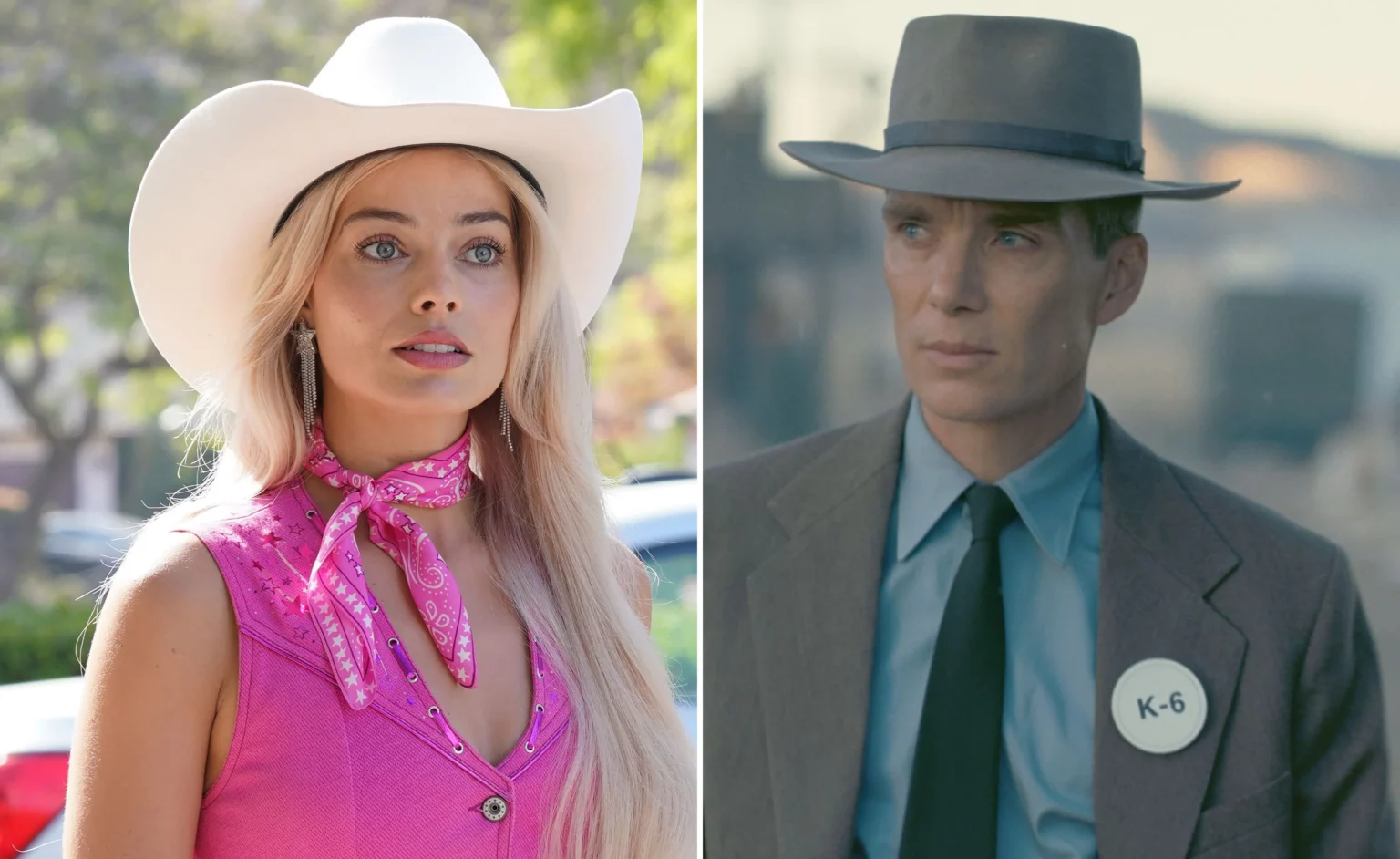In an unexpected turn of events, this summer has witnessed the rise of a peculiar phenomenon known as “Barbenheimer.” At first glance, Greta Gerwig’s Barbie movie and Christopher Nolan’s Oppenheimer biopic couldn’t be more different. One is a colorful, postmodern comedy centered around the iconic dolls known for their pink clothing, while the other is a brooding portrayal of the scientist behind the atom bomb during World War Two. Yet, the two films, slated for release on the same day, have become so entwined in the public’s imagination that they now share a portmanteau name, capturing the attention and creativity of social media users.
Initially perceived as a classic example of counterprogramming, with audiences choosing between the light-hearted Barbie and the intense Oppenheimer, the stark tonal contrast between the films quickly led to a different narrative. The internet embraced the Barbenheimer phenomenon, and the term took on a life of its own. Mock posters and T-shirts imagining a combined “Barbenheimer” movie emerged, and discussions on viewing plans, attire, cocktails, and snacks for the double bill flooded social media.
This viral meme inadvertently became a marketing coup, benefiting both films and enticing audiences to see both projects. Despite their apparent differences, both movies boast impressive casts, exceptional production values, and are the passion projects of renowned Oscar-nominated directors. Consequently, fans of both Barbie and Oppenheimer are anticipating the day of Barbenheimer with excitement, considering it the highlight of their cinematic year.
However, the Barbenheimer trend also reveals a lack of traditional blockbuster offerings this summer. Neither film fits the mold of a standard mainstream hit. Oppenheimer delves into lengthy scientific debates, while Barbie ventures into deep philosophical and political questions, potentially challenging its young target audience. In a different era, these films might have been overshadowed by more commercial superheroes or science-fiction epics. Yet, with few major blockbusters on the horizon until later in the year, Barbenheimer has become a respite from the current cinematic landscape.
The chatter surrounding Barbenheimer may reflect a sense of urgency to savor the experience of going to the movies, given the ongoing Covid-19 pandemic and current strikes affecting the film industry. It feels like a celebration of the past rather than a glimpse of a bright future.
Christopher Nolan’s advocacy for analog film and Barbie’s reliance on nostalgic appeal evoke sentiments of bygone eras. The film industry has also experienced setbacks, such as Netflix dropping a high-budget project based on Mattel’s Masters of The Universe.
Ultimately, the Barbenheimer meme raises questions about the state of the movie business and the changing dynamics of cinema-going. It highlights how going to the movies has become a special occasion rather than a regular activity. The allure of dressing up and planning outings with friends suggests that the cinema experience now requires more deliberate intention. In this context, Barbenheimer stands as a unique and absurd phenomenon that has drawn audiences into theaters in an era where moviegoing has become less routine.
In conclusion, the Barbenheimer phenomenon has brought together two seemingly unrelated films and sparked a celebration of cinema that transcends their differences. It reflects a yearning for communal movie experiences and a respite from the challenges faced by the film industry. As audiences eagerly anticipate the summer of Barbenheimer, it serves as a testament to the enduring power of movies to unite and entertain, even in uncertain times.




